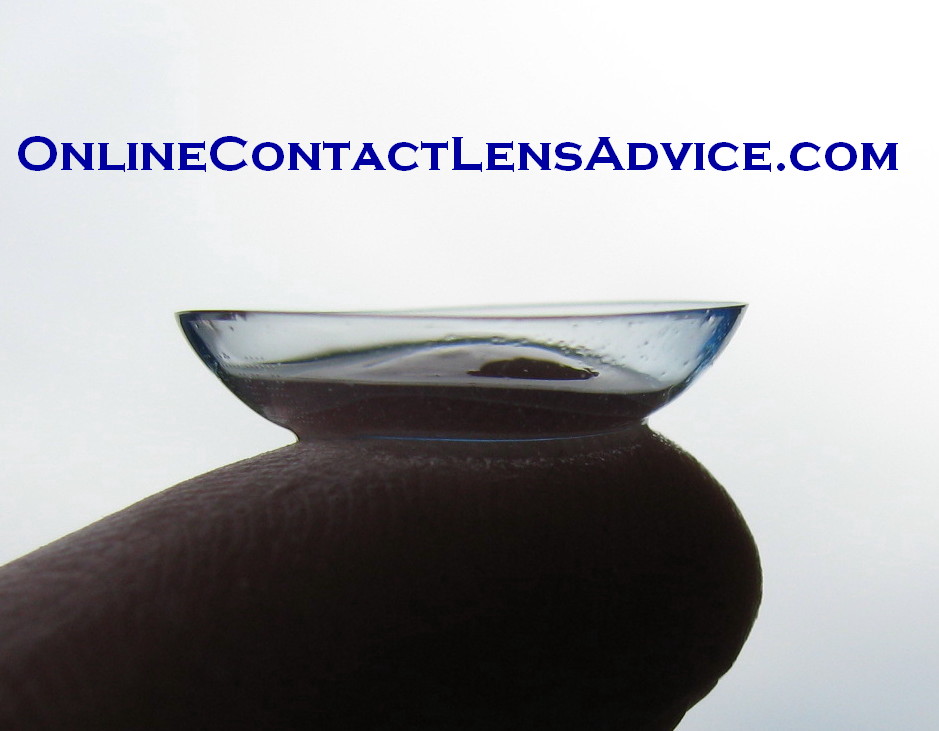- Home
- Contact Lens Types
- Monovision
What Is Monovision?
Wearing monovision contact lenses is an alternative to wearing eyeglasses if you need bifocals, or reading glasses. It is monocular vision. Essentially monovision is: one eye corrected for distance (the dominant eye) and the other eye corrected for close up, near vision (the non-dominant eye).
While this may sound strange and difficult to adjust to, many people wear contact lenses like this very successfully. It is so successful for so many people, that many people have laser eye surgery corrected for monovision.
Reading this description, you may think that if you are using monovision, you will have to close one eye to see properly. This is not the case. While only one eye sees clearly at a time, both eyes are still seeing, it's just that one eye is somewhat blurred (depending on the prescription). Some people do automatically adjust their head to see more clearly. For example, if you are right eye dominant, you may tilt your head slightly to the left so that your right eye is seeing far away (eg. TV); or you may tilt your head to the right so that your left eye can see the book you are reading.
Adaptation Period
It does take some time to get used to monovision, and there are some things to beware of when first trying these lenses.
- Some people experience headaches while adjusting to the prescription.
- Your depth perception may be off until you get used to wearing monovision. Please do not perform activities that require accurate depth perception until you are used to making adjustments for this. For example, even driving can be more difficult, since shoulder checks and keeping a safe distance from the car ahead require accurate vision and judgement.
- You may need to try several different powers to get the best vision possible at all distances.
- Since you only have two eyes, monovision will only give you two distances: typically distance and intermediate, or distance and near.
Compromise In Vision
Any time you deviate from your actual prescription, there will be some compromise in your vision, whether it be distance, intermediate or near. If it is critical that you have crisp vision at all distances, you are better off choosing glasses. The idea of monovision is to give you good vision all around, which allows you to drive, check your cell phone, and see your speedometer without having to put glasses on. While you can see well enough to drive, you might not see the street signs quite as soon as you could with your glasses; and you might have to hold your cell phone a little further away, or increase the font size.
Since you only have two eyes, we can only correct for two distances with monovision. Most people do very well with distance and intermediate, since most things they look at are at these distances. If needing to see smaller print occasionally, a low powered reading glass usually does the trick.
Some people do prefer to have distance and reading, if they do a lot of close work. This is usually a little harder to get used to, since there is a greater difference in powers between distance and reading; the eyes don't focus as well together. But it can be done.
Can't Get Used To Multifocal Contact Lenses?
Monovision can be a good alternative to multifocal contact lenses, if you find them difficult to get used to, or if the you find the price of them is too high.
Benefits of monovision vs multifocals:
- Less expensive: monovision uses the same contact lenses as distance only, we just alter the powers.
- Some people get sharper vision
- Those with astigmatism in their prescriptions can use monovision without paying even more (there are very few toric multifocal contact lenses; the ones that exist are very expensive)
Return to Contact Lens Types from Monovision
Search this site:

New! Comments
Have your say about what you just read! Leave me a comment in the box below.